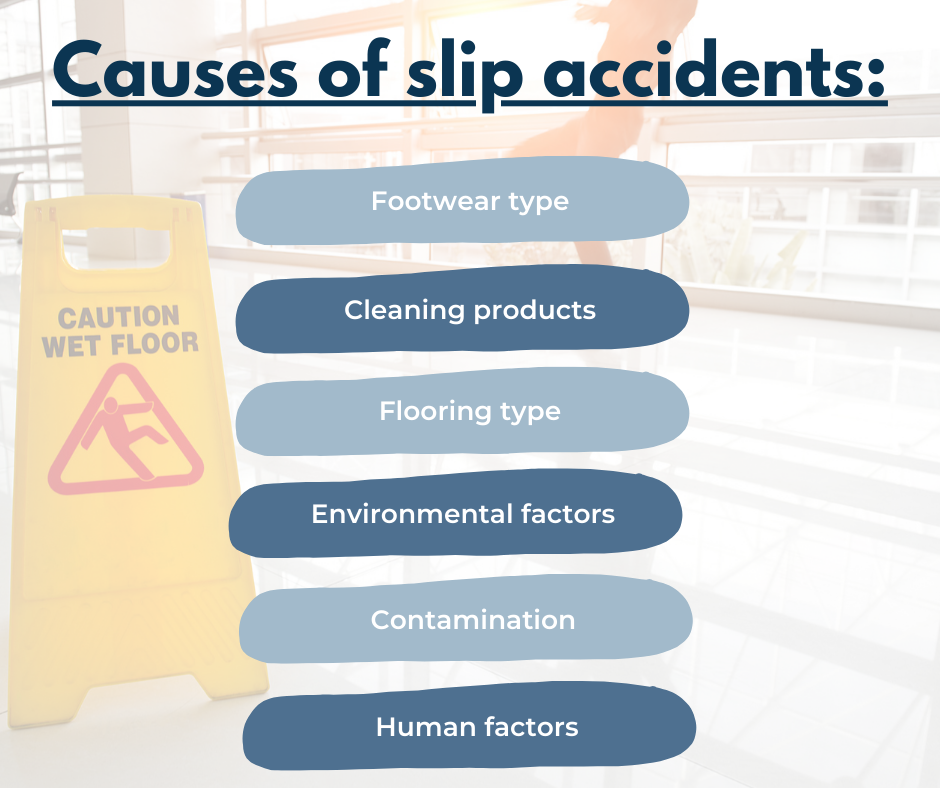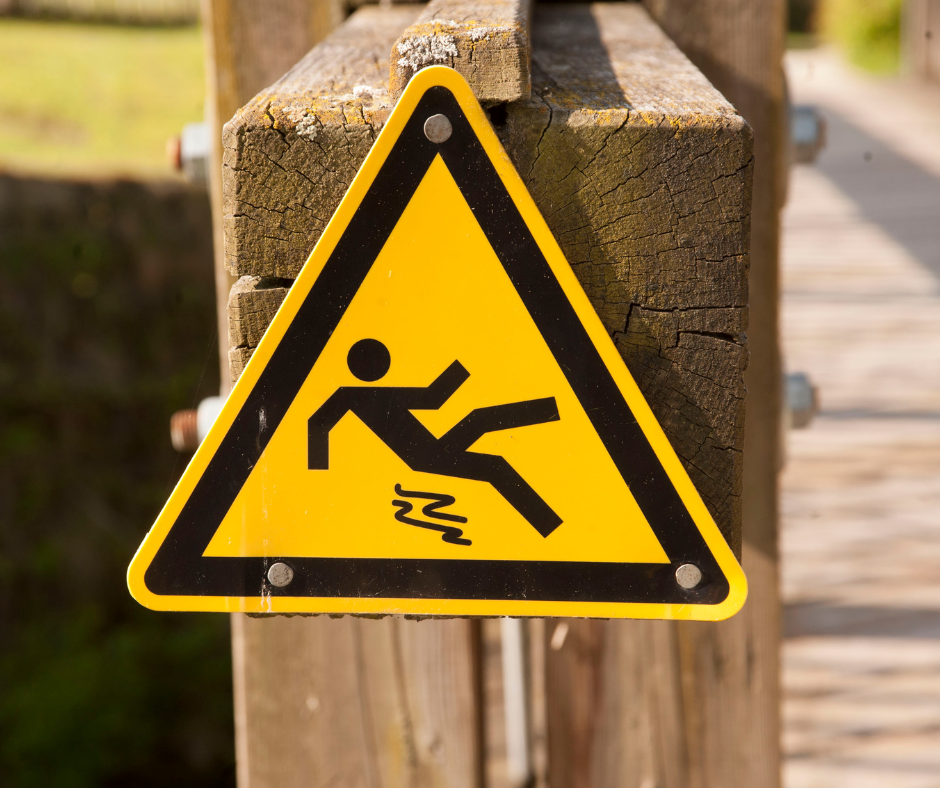Any workplace can carry the risk of slips, trips, and falls. Causing 40 percent of all reported major injuries per year, they are the most common cause of injury at work, and cost employers over £500m per year.
Keep reading to learn how to prevent slips, trips, and falls in your workplace.
What is the main cause of slips trips and falls?
 There can be many hazards in the workplace. By identifying the potential causes of slips, trips and falls make a significant start in working towards preventing them from occurring.
There can be many hazards in the workplace. By identifying the potential causes of slips, trips and falls make a significant start in working towards preventing them from occurring.
Slips can be caused by wet surfaces either as a result of spills, recent cleaning or even adverse weather conditions such as heavy rain. Adverse weather conditions can also pose further slipping hazards such as snow and ice in the winter months.
The most common cause of tripping hazards according to HSE is obstruction in walkways followed by uneven surfaces.
How can slips, trips, and falls be prevented?
 Preventing slips, trips and falls requires a combined effort from both employer and employees.
Preventing slips, trips and falls requires a combined effort from both employer and employees.
The most simple and easy preventative measure is to practice good housekeeping – clean up as you go.
This not only ensures that walkways are kept free from unnecessary obstruction but ensures that any spills are cleaned up immediately essentially eliminating slip risks.
Employees and cleaners need to have ‘a see it, sort it’ attitude to ensure work areas are kept clear.
What is the main legislation for slips trips and falls?
 Employers have a legal obligation to ensure a safe working environment under the Health and Safety at Work Act 1974 to ensure the health and safety of all employees and anyone affected by their work, so far as is reasonably practicable, which means balancing the level of risk against the measures needed to control the risk in terms of money, time or trouble. This includes taking steps to control slip and trip risks.
Employers have a legal obligation to ensure a safe working environment under the Health and Safety at Work Act 1974 to ensure the health and safety of all employees and anyone affected by their work, so far as is reasonably practicable, which means balancing the level of risk against the measures needed to control the risk in terms of money, time or trouble. This includes taking steps to control slip and trip risks.
Other regulations include the Workplace (Health, Safety and Welfare) Regulations 1992 in which employers have the legal duty to ensure that it’s possible for workers and visitors to safely move around the workplace.
The legislation requires that pedestrian routes and flooring are kept free from obstructions to ensure the risk of anyone suffering an injury as a result of slip or trip accident.
In short, the law requires that employers take all reasonable steps to make sure that slip and trip hazards like holes, obstacles, uneven areas, slopes and slippery areas do not pose a risk of injury to workers and visitors
How can WA Management help?
WA Management offer an online Slips, Trips and Falls training course, which provides essential information on how slips, trips and falls occur in the workplace and identifies common hazards that can cause accidents.
We also offer bespoke risk assessments for any activities that may cause slip, trip or fall hazards.

Manual Handling and Slips, Trips & Falls training courses are essential tools in preventing accidents and injuries in the workplace.. Make sure you don’t miss out on our 10% off deal on these courses, available until the end of August. Simply enter the code ‘mh10’ at checkout to save!
Read more Consultant’s blogs here.
To keep up to date with the latest health & safety news and advice, follow us on social media:
